Abstract
The effect of temperature on tetanic tension development was examined in extensor digitorum longus (fast-twitch) and soleus (slow-twitch) muscles of the rat, in vitro and with direct stimulation. The temperature range was from 35 to 10 degrees C. 2. The maximum tetanic tension decreased slightly on cooling from 35 to 25 degrees C. Cooling below 20 degrees C resulted in a marked depression of tetanic tension. The results were similar in the two muscles. 3. Analysis (in the form of Arrhenius plots) of the rate of tetanic tension development and relaxation clearly showed the occurrence of two phases in their temperature dependence, due to an increased temperature sensitivity below about 25 degrees C. Arrhenius activation energy estimates for temperatures lower than 21 degrees C were around twice as high as those for temperatures higher than 24 degrees C in both muscles.
Full text
PDF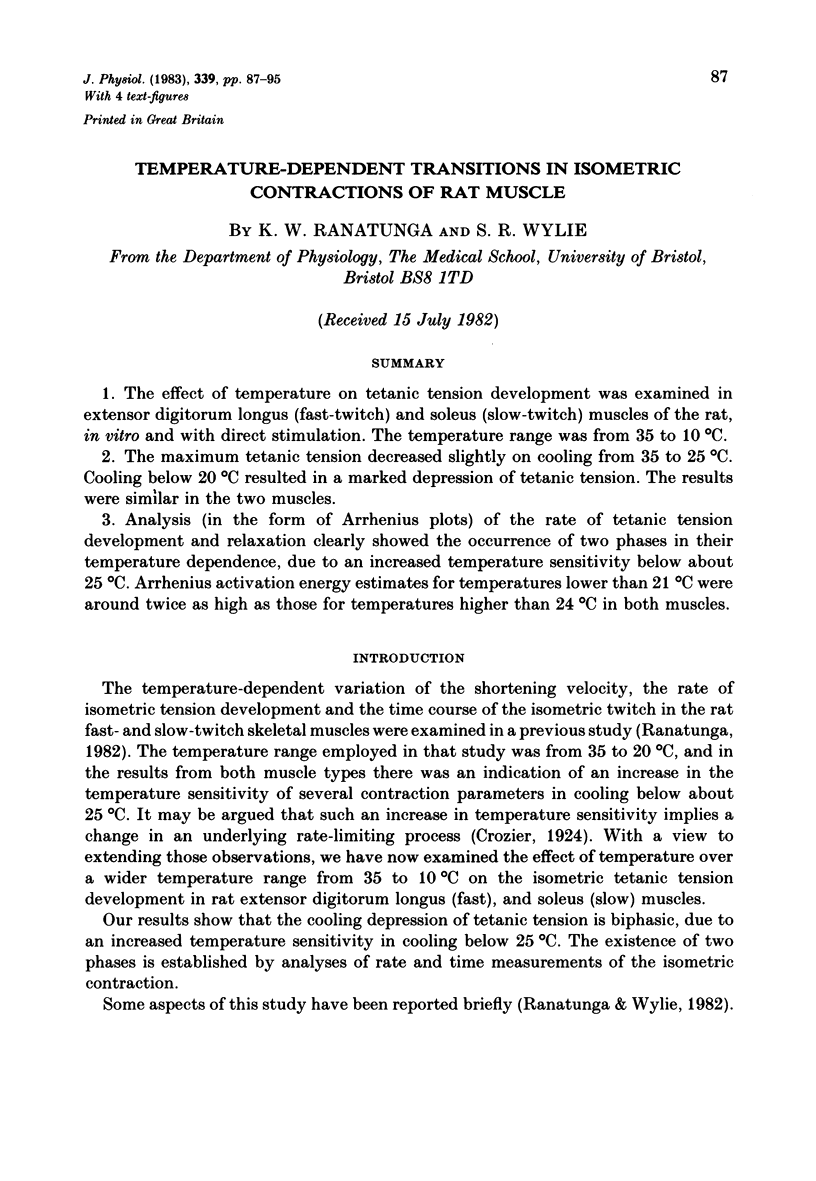
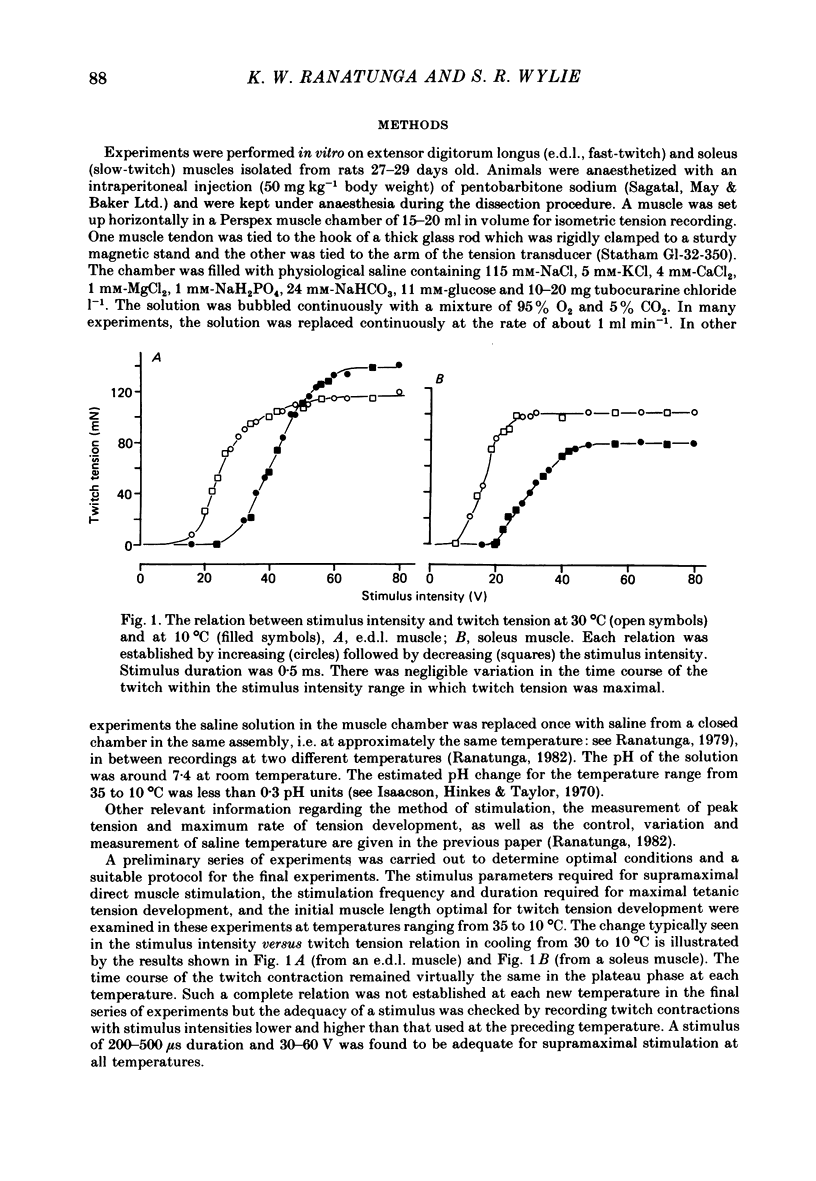
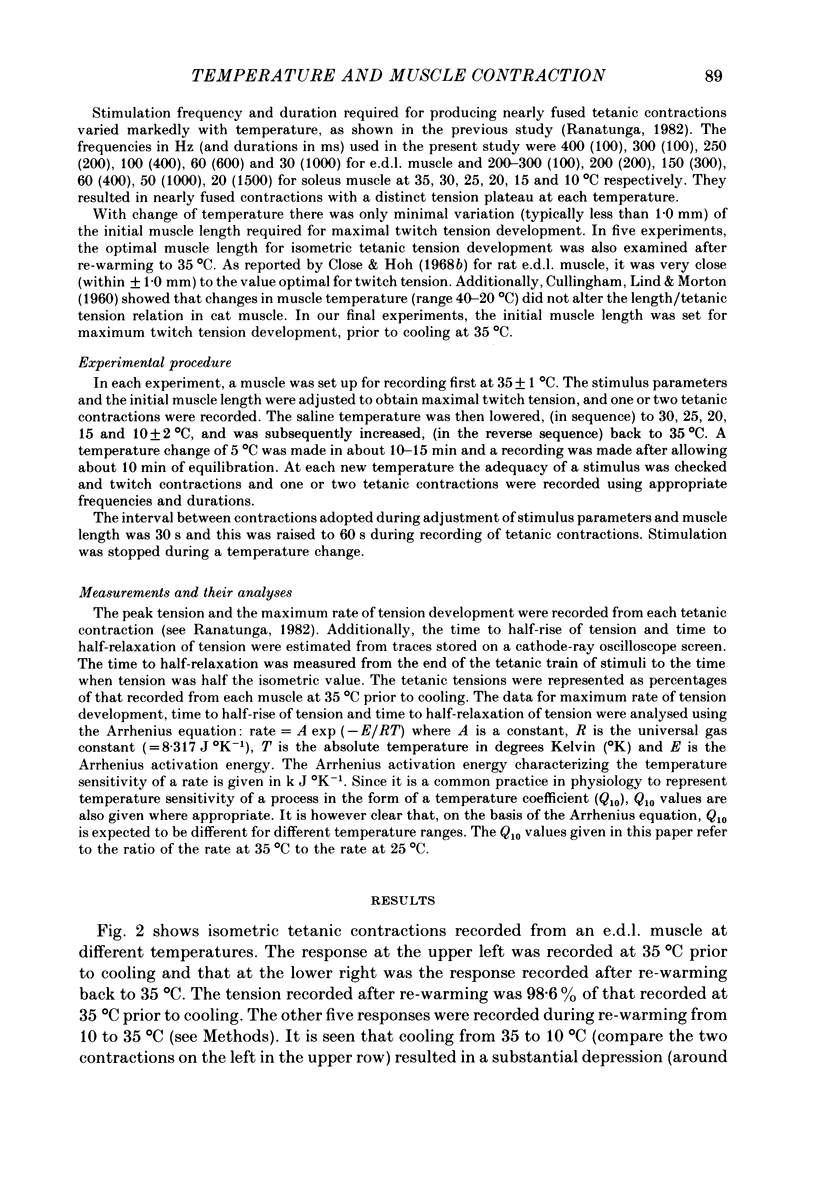
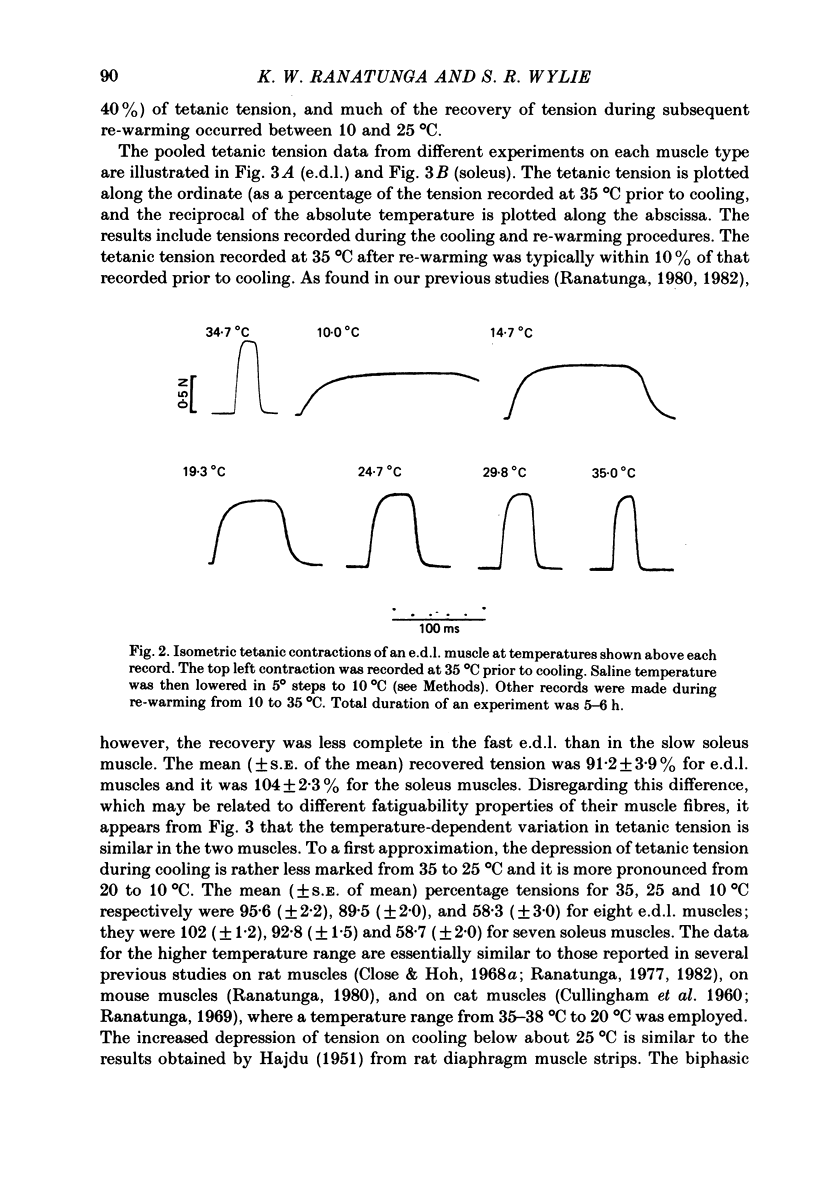
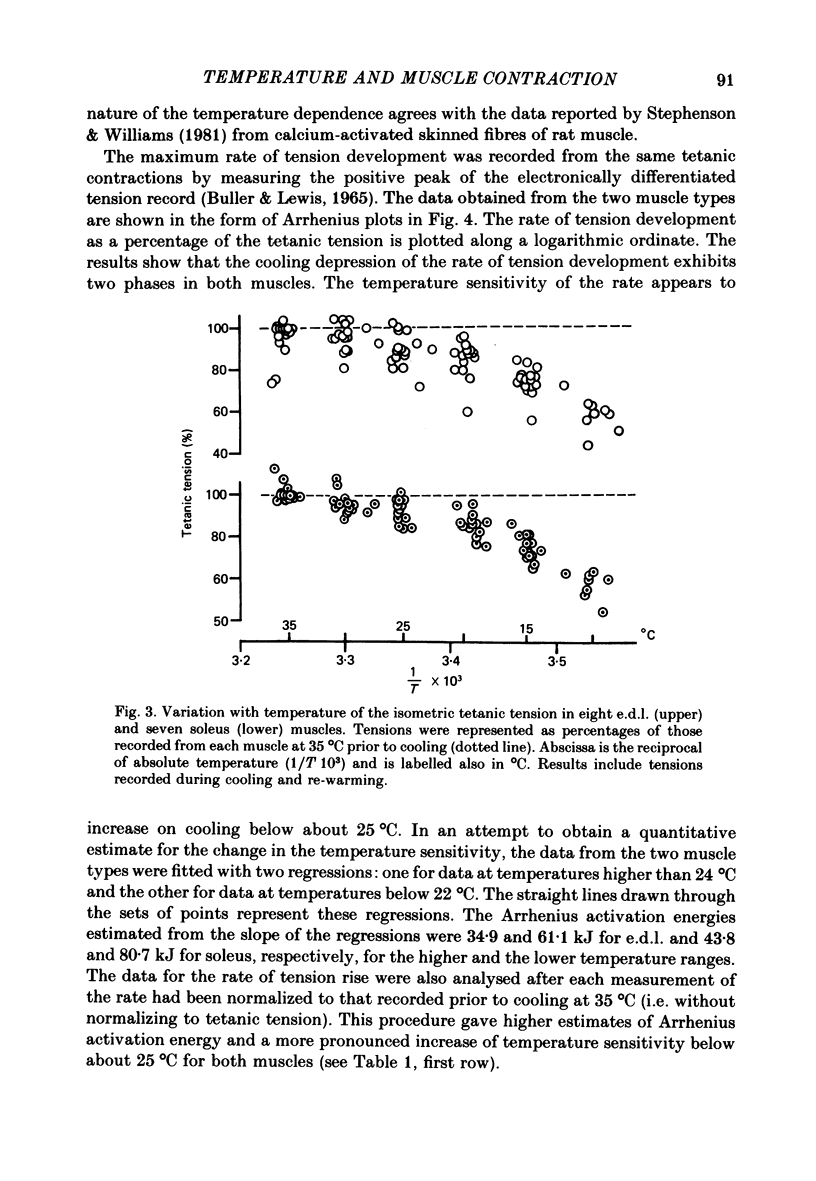
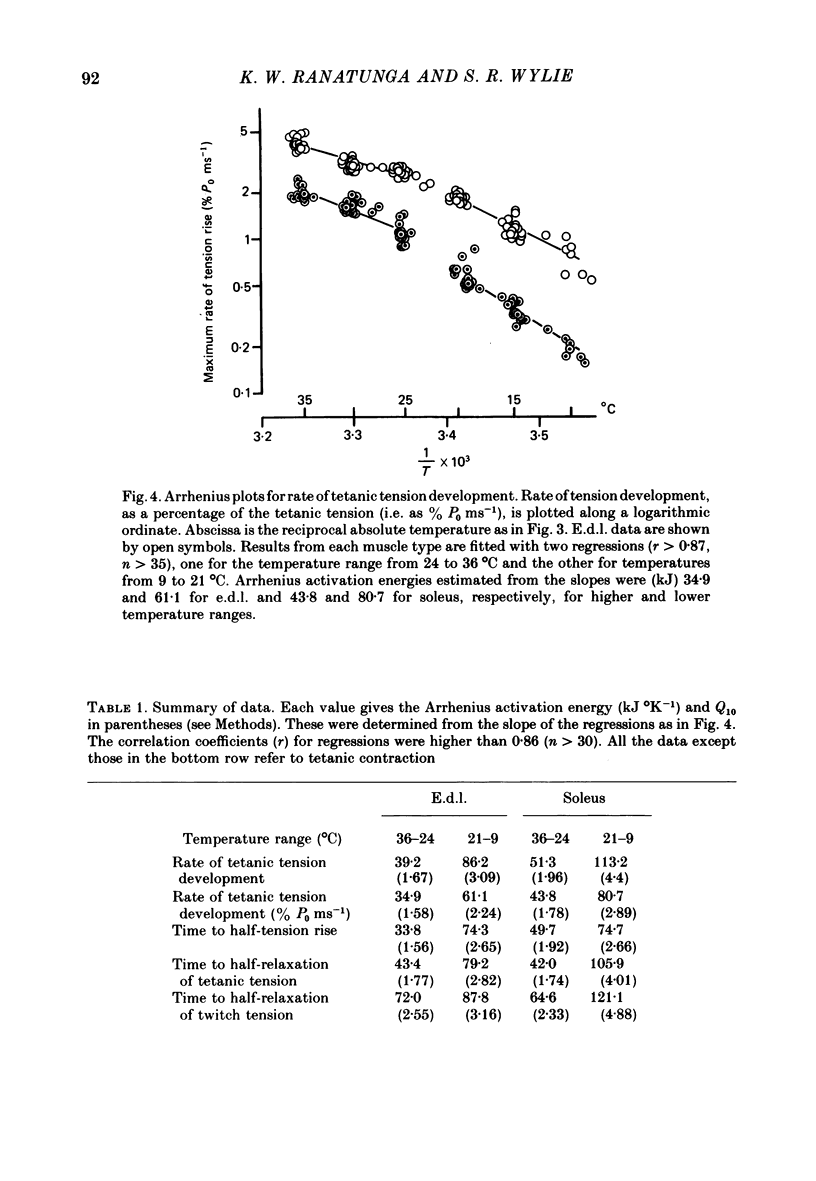
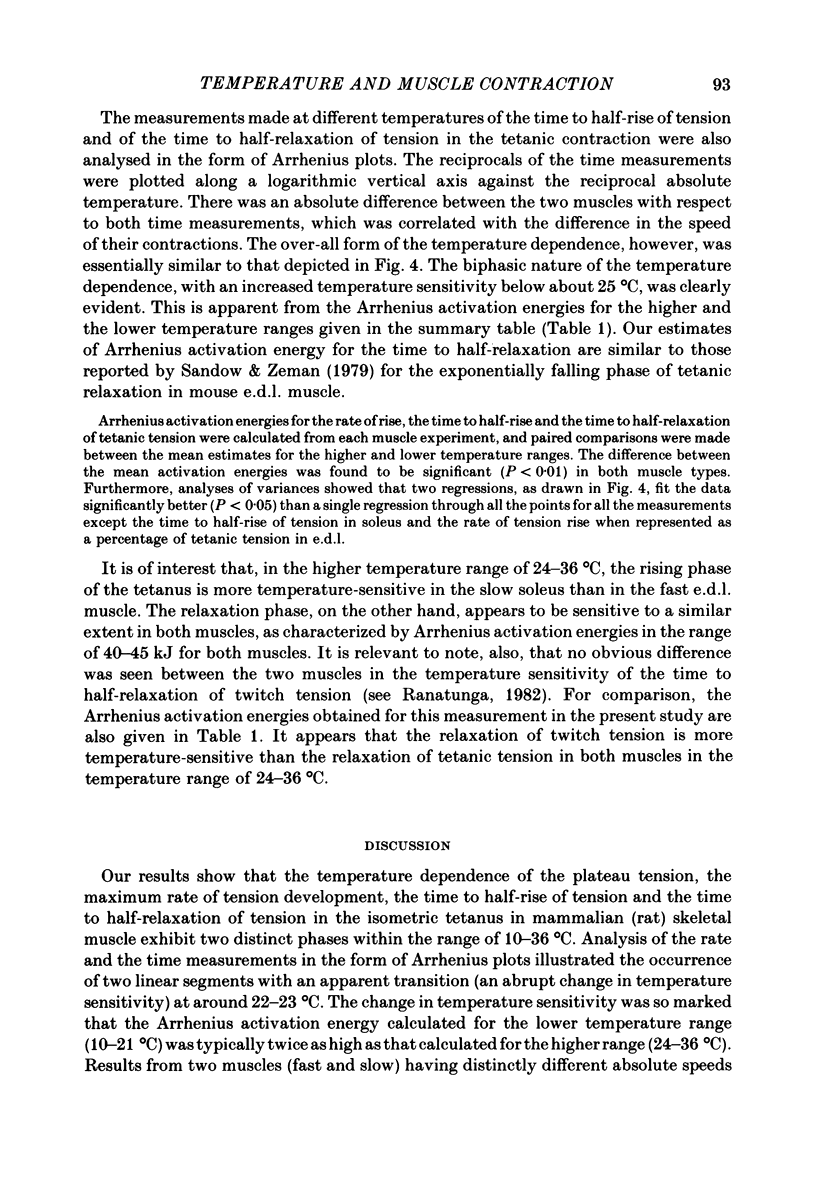
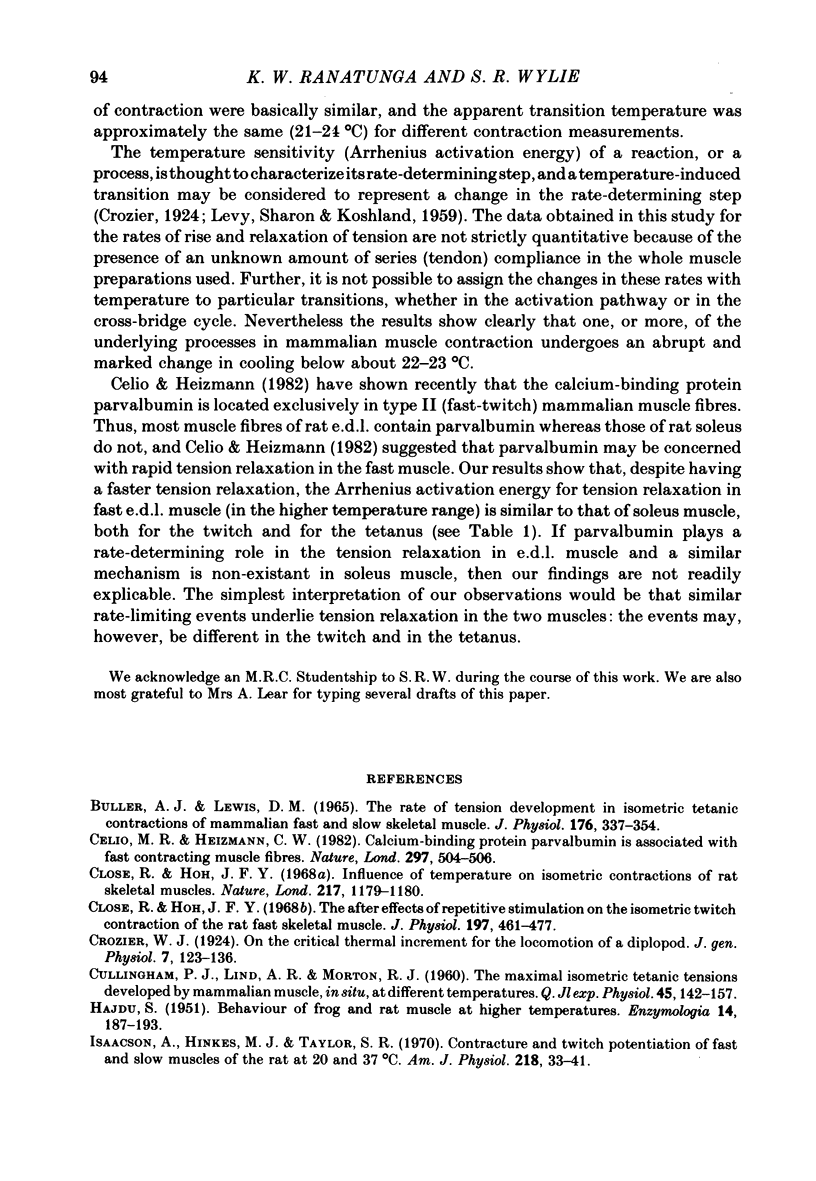
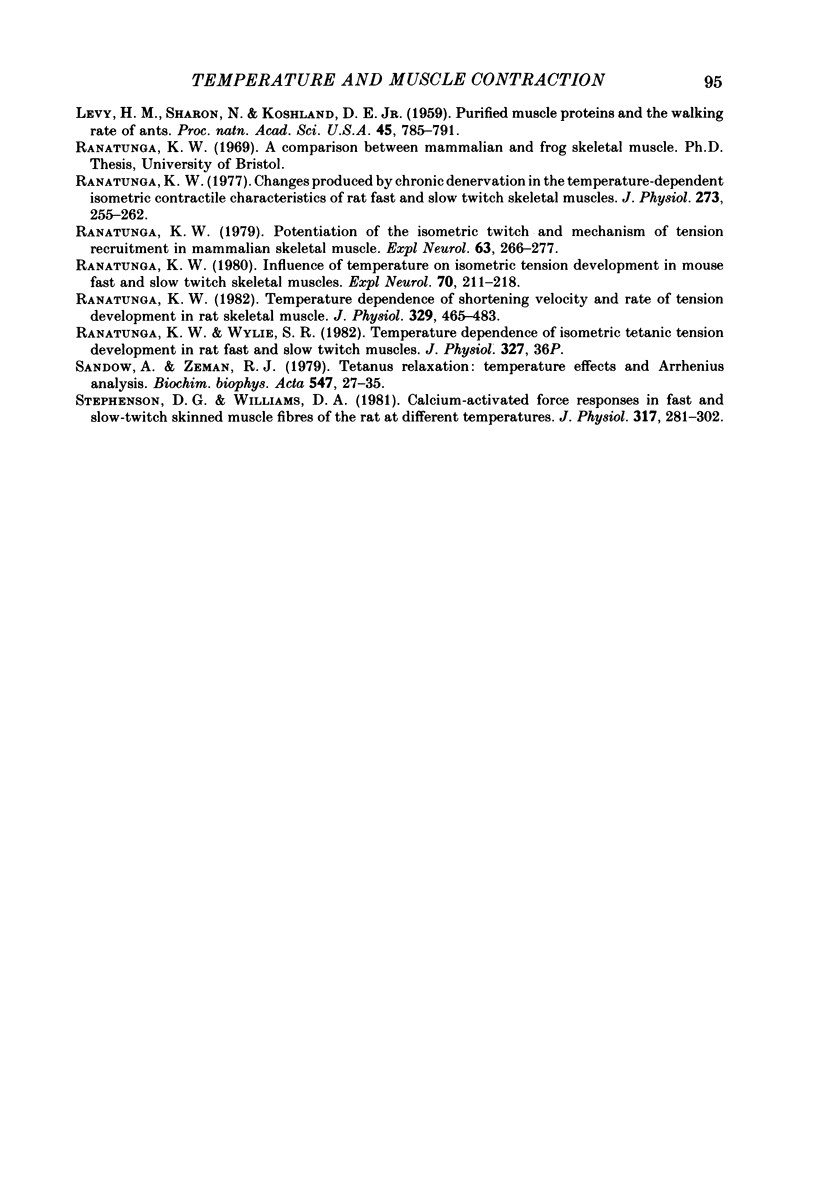
Selected References
These references are in PubMed. This may not be the complete list of references from this article.
- BULLER A. J., LEWIS D. M. THE RATE OF TENSION DEVELOPMENT IN ISOMETRIC TETANIC CONTRACTIONS OF MAMMALIAN FAST AND SLOW SKELETAL MUSCLE. J Physiol. 1965 Feb;176:337–354. doi: 10.1113/jphysiol.1965.sp007554. [DOI] [PMC free article] [PubMed] [Google Scholar]
- CULLINGHAM P. J., LIND A. R., MORTON R. J. The maximal isometric tetanic tensions developed by mammalian muscle, in situ, at different temperatures. Q J Exp Physiol Cogn Med Sci. 1960 Apr;45:142–156. doi: 10.1113/expphysiol.1960.sp001452. [DOI] [PubMed] [Google Scholar]
- Celio M. R., Heizmann C. W. Calcium-binding protein parvalbumin is associated with fast contracting muscle fibres. Nature. 1982 Jun 10;297(5866):504–506. doi: 10.1038/297504a0. [DOI] [PubMed] [Google Scholar]
- Close R., Hoh J. F. Influence of temperature on isometric contractions of rat skeletal muscles. Nature. 1968 Mar 23;217(5134):1179–1180. doi: 10.1038/2171179a0. [DOI] [PubMed] [Google Scholar]
- Close R., Hoh J. F. The after-effects of repetitive stimulation on the isometric twitch contraction of rat fast skeletal muscle. J Physiol. 1968 Jul;197(2):461–477. doi: 10.1113/jphysiol.1968.sp008570. [DOI] [PMC free article] [PubMed] [Google Scholar]
- HAJDU S. Behaviour of frog and rat muscle at higher temperatures. Enzymologia. 1950 Nov 15;14(4):187–193. [PubMed] [Google Scholar]
- Isaacson A., Hinkes M. J., Taylor S. R. Contracture and twitch potentiation of fast and slow muscles of the rat at 20 and 37 C. Am J Physiol. 1970 Jan;218(1):33–41. doi: 10.1152/ajplegacy.1970.218.1.33. [DOI] [PubMed] [Google Scholar]
- Levy H. M., Sharon N., Koshland D. E. PURIFIED MUSCLE PROTEINS AND THE WALKING RATE OF ANTS. Proc Natl Acad Sci U S A. 1959 Jun;45(6):785–791. doi: 10.1073/pnas.45.6.785. [DOI] [PMC free article] [PubMed] [Google Scholar]
- Ranatunga K. W. Changes produced by chronic denervation in the temperature-dependent isometric contractile characteristics of rat fast and slow twitch skeletal muscles. J Physiol. 1977 Dec;273(1):255–262. doi: 10.1113/jphysiol.1977.sp012092. [DOI] [PMC free article] [PubMed] [Google Scholar]
- Ranatunga K. W. Influence of temperature on isometric tension development in mouse fast- and slow-twitch skeletal muscles. Exp Neurol. 1980 Nov;70(2):211–218. doi: 10.1016/0014-4886(80)90021-7. [DOI] [PubMed] [Google Scholar]
- Ranatunga K. W. Potentiation of the isometric twitch and mechanism of tension recruitment in mammalian skeletal muscle. Exp Neurol. 1979 Feb;63(2):266–276. doi: 10.1016/0014-4886(79)90123-7. [DOI] [PubMed] [Google Scholar]
- Ranatunga K. W. Temperature-dependence of shortening velocity and rate of isometric tension development in rat skeletal muscle. J Physiol. 1982 Aug;329:465–483. doi: 10.1113/jphysiol.1982.sp014314. [DOI] [PMC free article] [PubMed] [Google Scholar]
- Sandow A., Zeman R. J. Tetanus relaxation. Temperature effects and Arrhenius analysis. Biochim Biophys Acta. 1979 Jul 10;547(1):27–35. doi: 10.1016/0005-2728(79)90092-6. [DOI] [PubMed] [Google Scholar]
- Stephenson D. G., Williams D. A. Calcium-activated force responses in fast- and slow-twitch skinned muscle fibres of the rat at different temperatures. J Physiol. 1981 Aug;317:281–302. doi: 10.1113/jphysiol.1981.sp013825. [DOI] [PMC free article] [PubMed] [Google Scholar]


